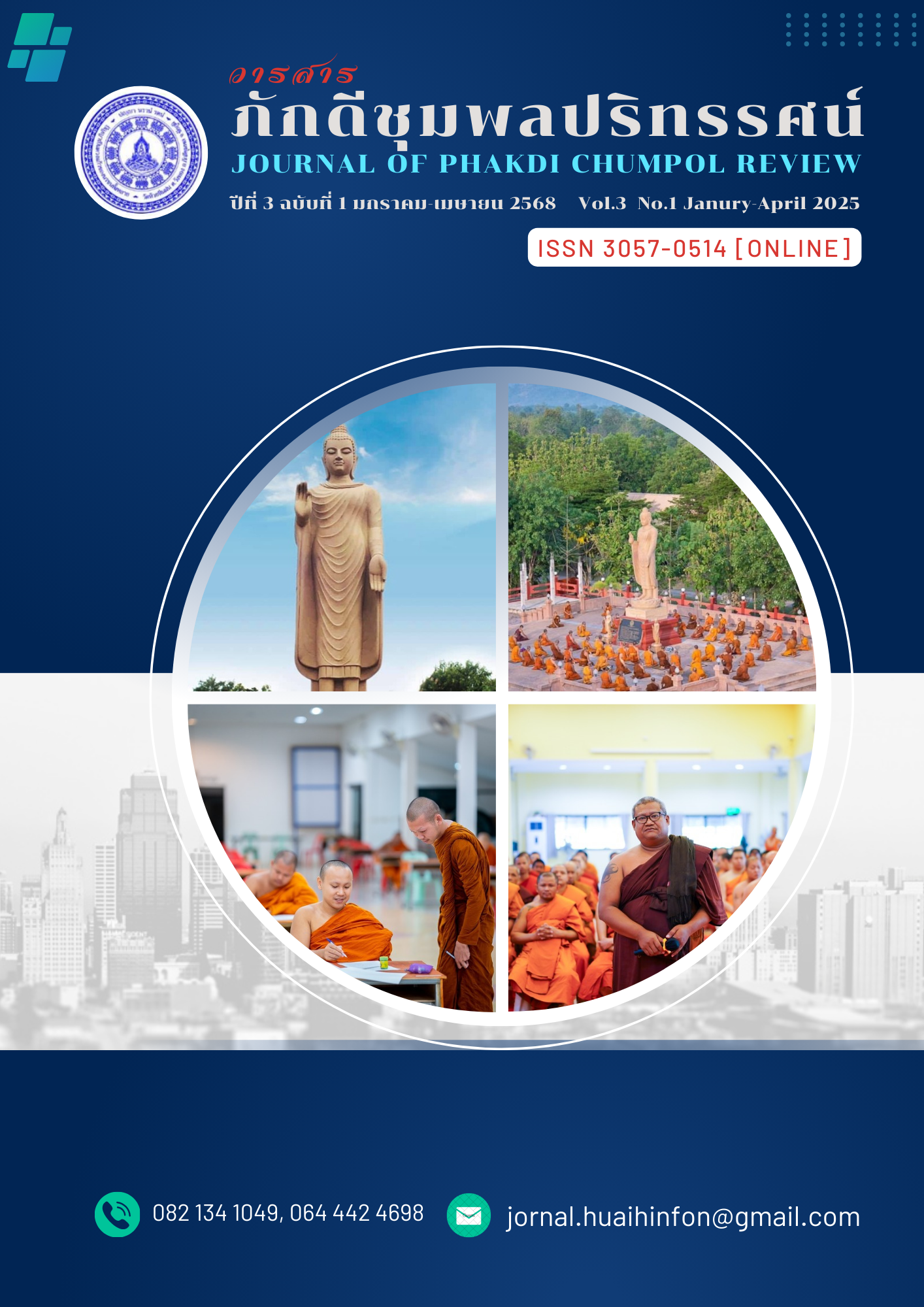Monument to Victory in the Annam War, Khmer Battlefield, Vietnam: Wat Chaichana Songkhram, Bangkok.
Keywords:
Victory Monument, Annam Battlefield in Cambodia and Vietnam, Victory War TempleAbstract
This article is written about Victory Monument in the Siam Yutta War, Cambodia, Vietnam: Wat Chaichana Songkhram, Bangkok, which is a religious place in Buddhism that reflects the concept of victory and the creation of monuments in Buddhism. Use study methods from documents, research, and observation from real areas. and write and present it in the form of an academic article
The results of the study concluded that Memorials to victory in war are erected all over the world. By Wat Chai Chana Songkhram It is another place that was built with such a motto. It is a Buddhist temple built in the area of the house and land of Chao Phraya Bodindecha (Sing Singhaseni), a major army commander in the reign of King Rama III after returning to fight against the Vietnamese and Cambodians. Devotees raised up land and houses to make a temple and named it "Wat Chaichana Songkhram" to commemorate the victory in the war. Located in the Khlong Thom area In Samphanthawong District Bangkok That was built as a memorial to the war in Cambodia. And there are temples or places of worship related to the war and events related to that war, such as Wat Theplila, Wat Phra Kraisi (Noi) and Wat Prappachamit or Wat Kradon (វត្តក្ដុលដូនទាវ) in Battambang City. Built in 1845, Wat Phra Phutthakosachan or Wat Chen Dom Daek. (វត្តព្រះពុទ្ធឃោសាចារ្យ) at Phnom Penh, all due to the war and events on the battlefield at that time as well. It is as if it is a memorial of past wars and battles.
References
ถนอม อานามวัฒน์. (2516). ความสัมพันธ์ระหว่างไทยเขมรและญวนในสมัยรัตนโกสินทร์ตอนต้น. กรุงเทพฯ:
มหาวิทยาลัยศรีนครินทรวิโรฒ.
ไทยรัฐ. (2558)."จารึกพระยาบดินทร์ ยังอยู่ดีที่...พนมเปญ". สืบค้น 18 มีนาคม 2567.
จาก https://www.thairath.co.th/news/politic/477130
พระมหาสยาม สยามิโก และคณะ. (2567). อนุสรณ์พิธีพระราชทานเพลิงศพพระราชวิริยสุนทร
(ยิน วรกิจฺโจ ป.ธ.๕). กรุงเทพฯ: สำนักพิมพ์เลี่ยงเซียง.
โพสต์ทูเดย์. (2558)."แกะรอยไทย ในพระตะบอง". สืบค้น 18 มีนาคม 2567.
จาก https://www.posttoday.com/lifestyle/340428
รุ่งอรุณ กุลธำรง. (2556). วัดกับมัสยิดริมคลองแสนแสบ : ความเป็นมาและการดำรงอยู่. วารสารไทยศึกษา.
(2),59-96.
วราภรณ์ จิวชัยศักดิ์. (2556). คลองแสนแสบ : ความเป็นมาและการเปลี่ยนแปลง. วารสารไทยศึกษา.
(2),1-23.
วลัยลักษณ์ ทรงศิริ. (2022). "วัดกระโดนหรือวัดปราบปัจจามิตร". มูลนิธิเล็ก-ประไพ วิริยะพันธุ์.
สืบค้นเมื่อ 18 มีนาคม 2567. จาก https://www.blockdit.com/posts/6341a0d61164e653f85a63d1
ศานติ ภักดีคำ. (2553). คลองแสนแสบ : ความสำคัญในฐานะเส้นทางเดินทัพไทย-กัมพูชา.หน้าจั่ว ว่าด้วย
ประวัติศาสตร์สถาปัตยกรรม และสถาปัตยกรรมไทย. 6 (2553),165-180.
________. (2549). ศิลาจารึกเจ้าพระยาบดินทรเดชา (สิงห์ สิงหเสนี) ณ วัดพุทธโฆสาจารย์ กรุงพนมเปญ
(K.1213). วารสารดำรงวิชาการ .5 (2),172-186.
________. (2557). "วัดเทพลีลา วัดของเจ้าพระยาบดินทรเดชา ที่สร้างคราวขุดคลอง "แสนแสบ"".
ศิลปวัฒนธรรม. สืบค้นเมื่อ 18 มีนาคม 2567
จาก https://www.silpa-mag.com/history/article_39250
________. (2560). "เจ้าพระยาบดินทรเดชา (สิงห์ สิงหเสนี) กับบทบาทสร้างเมืองใหม่ในกัมพูชา".
ศิลปวัฒนธรรม. สืบค้น 15 มีนาคม 2567. จาก
https://www.silpa-mag.com/history/article_43224
กองบรรณาธิการศิลปวัฒนธรรม. (2567). เปิดที่มา “ถนนเชียงใหม่” ฝั่งธนบุรี ชื่อ “เชียงใหม่” แต่ทำไมมาอยู่
กรุงเทพฯ?. ศิลปวัฒนธรรม. สืบค้น 29 พฤษภาคม 2567.




